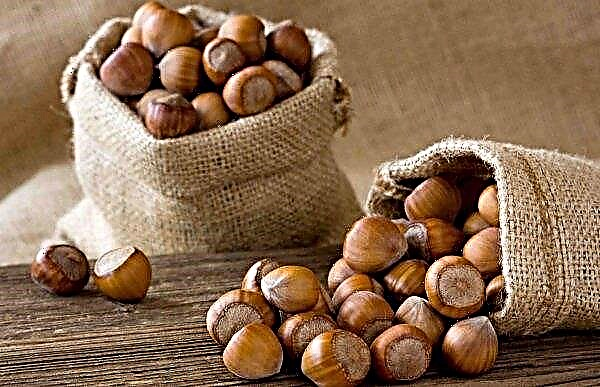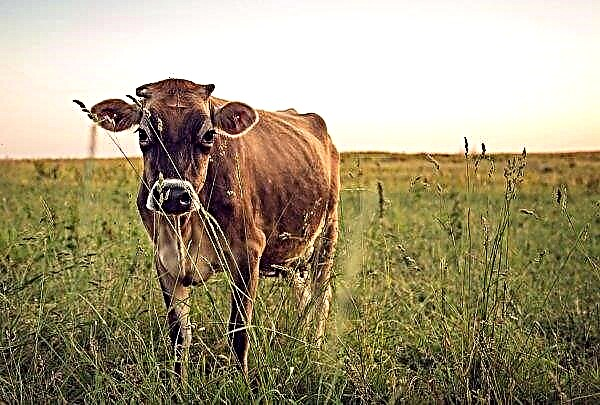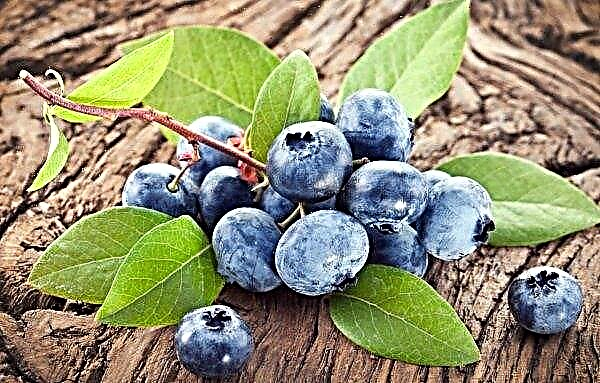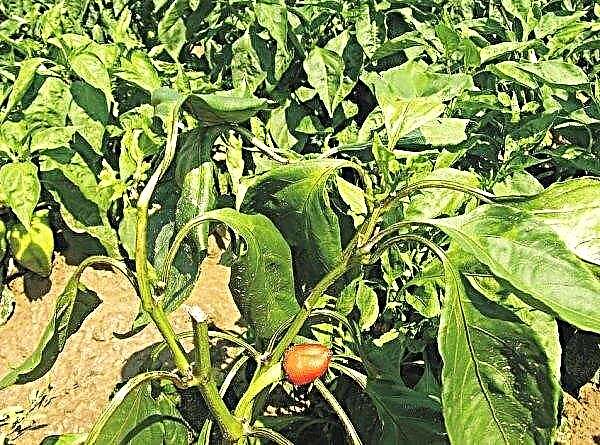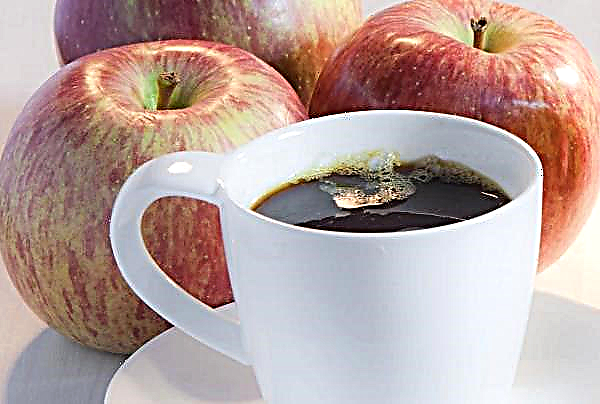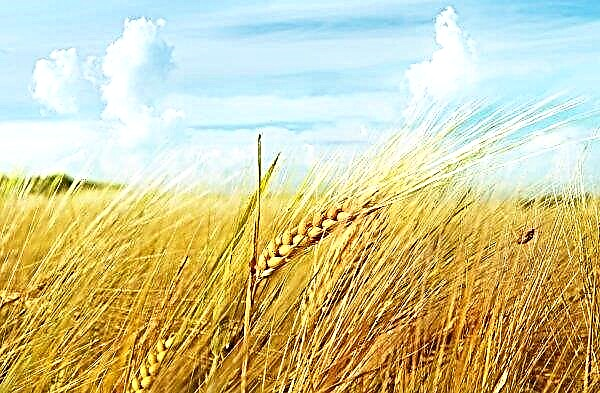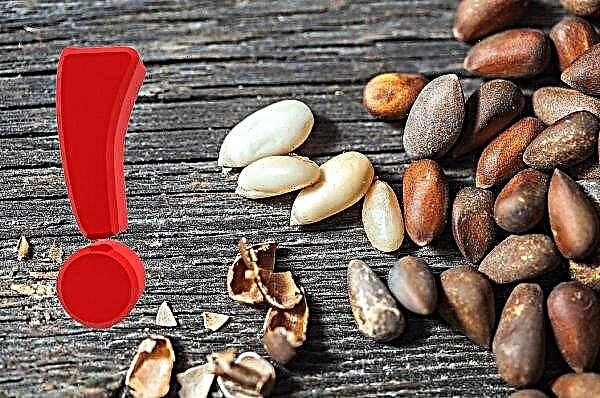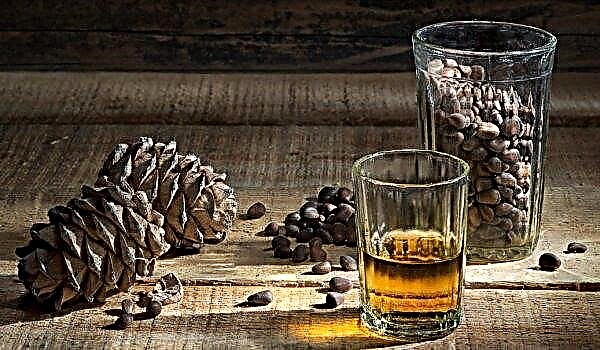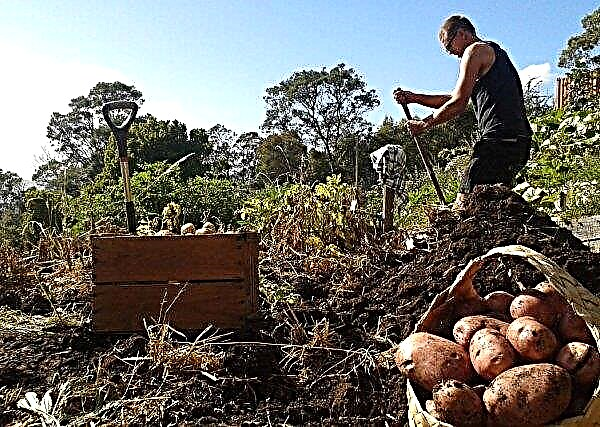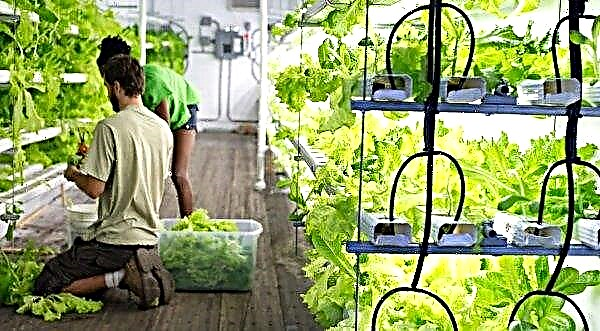Tasty and sweet green peas are always a welcome guest on our table. However, the cultivation process of this crop may be aggravated by the appearance of various difficulties that can spoil the long-awaited fruits or even destroy them. To prevent damage to the future crop, it is enough to know in advance about the main parasites of peas and measures to combat them and follow the simple rules of growing a plant. In this article, we will consider how to process peas from pests and diseases, as well as the most dangerous and common ones.
Pea disease
Peas, like any other representative of legumes, are affected by all kinds of diseases that can significantly reduce the yield and worsen its presentation and taste. To reduce the risk of developing infections, preventive measures are required, which include competent selection of pea varieties, chemical treatment and compliance with planting and plant care standards. In addition, you must also have an idea about the protection of this culture from the most common diseases, as well as their characteristics. Consider the main ones.
Ascochitosis
One of the most dangerous fungal diseases, common in the main areas of pea cultivation, affects other legumes insignificantly. It is characterized by the defeat of all organs of the plant, which is why young seedlings die immediately, and on adults, the fruits thinning noticeably and become unusable. The disease manifests itself in the form of brown spots with small black dots in the center - "pycnidia".
These are disputes, their task is to provide a new infection that will occur after they mature and burst. The stains penetrate into the stems so deep that they form long ulcers. The seeds of the affected plants are wrinkled, covered with brown spots, non-viable. Ascochitosis develops due to increased environmental humidity and frequent precipitation, as well as excessive soil acidity. Sources of infection may be the remains of the affected seeds of the previous crop, in which the pathogen mycelium is located. As preventive measures to combat ascochitosis, it is necessary to follow crop rotation standards (plant legumes in their original place no earlier than 4 years later), get rid of the remnants of the previous crop and regularly clean the bed of weeds and fallen leaves, where the mycelium can last about 5 years .
As preventive measures to combat ascochitosis, it is necessary to follow crop rotation standards (plant legumes in their original place no earlier than 4 years later), get rid of the remnants of the previous crop and regularly clean the bed of weeds and fallen leaves, where the mycelium can last about 5 years .
It is important to remember that resistant varieties of peas to this disease do not exist, therefore only preventive measures can prevent the development of infection. In case of damage to the plant by ascochitosis, it is necessary to spray copper sulfate at a concentration of 0.5%.
A good result will also be obtained by pre-soaking the seeds in a fungicide solution, which is carried out for 10 hours immediately before the day of sowing. At the advanced stage of the development of the disease, no treatment will help, and it is recommended that the affected plants be eliminated and burned.
Anthracnose
Another fungal disease that is symptomatically similar to ascochitosis, but is much less common. Anthracnose is characterized by the appearance on all aerial parts of the plant of light gray spots with an orange center, in which spores of conidia - fungi are located. The culture attacked by the disease is not only characterized by reduced productivity, but also by significantly impaired seed germination and quality. Anthracnose affects a growing plant throughout the entire growing season, and the development of the disease at the stage of the appearance of beans is especially dangerous. On them, during the period of infection, the disease is expressed particularly clearly by the formation of roundish indented spots of brown color. In the event of a severe lesion, they concentrate in large ulcers with the same brown color as the center of spore accumulation. There are frequent cases of penetration of the infection into the seeds, which are also characterized by the formation of spots. Favorable conditions for the development of the pathogen are long-term precipitation, high humidity and wind. Anthracnose infection occurs through plant debris and poisoned seeds preserved in the soil.
On them, during the period of infection, the disease is expressed particularly clearly by the formation of roundish indented spots of brown color. In the event of a severe lesion, they concentrate in large ulcers with the same brown color as the center of spore accumulation. There are frequent cases of penetration of the infection into the seeds, which are also characterized by the formation of spots. Favorable conditions for the development of the pathogen are long-term precipitation, high humidity and wind. Anthracnose infection occurs through plant debris and poisoned seeds preserved in the soil.
The main measure of combating anthracnose is the use of agricultural techniques - timely and high-quality soil cultivation, elimination of the remains of affected plants and maintaining crop rotation. As a preventive measure, seeds are also treated before planting, and various chemicals are used to treat diseased plants. An effective tool for eliminating anthracnose is Impact. Otherwise, measures to combat this ailment do not differ from measures to combat ascochitosis.
Important! An effective measure against the spread of infection will be covering pea plantings with a film.
Rust
An extremely dangerous ailment that occurs everywhere in all areas of cultivation of this crop, especially harms peas in the southern regions, since it acquires the most intensive development in a warm and very humid climate. The consequences of the disease are a violation of the biochemical processes of the plant and the loss of its viability, which later affects the course of photosynthesis.
The symptomatology of rust is pronounced: the so-called pustules appear on the stems and leaves of peas - a rash in the form of dark brown oval spots, which, as a rule, is placed concentrically. With increased infection, drying and premature falling of leaves is also noted, and the beans at this advanced stage finally stop their development. The causative agent of the disease is spores, the primary source of which is euphorbia, and the infection spreads through the wind. As in the case of previous diseases, the focus of infection may be the plant remains of diseased plants. Rust infection occurs at the stage of the flowering phase, and the number of crop losses can reach 30–40%.
The causative agent of the disease is spores, the primary source of which is euphorbia, and the infection spreads through the wind. As in the case of previous diseases, the focus of infection may be the plant remains of diseased plants. Rust infection occurs at the stage of the flowering phase, and the number of crop losses can reach 30–40%.
The main methods of protection against pea rust are as follows:
- sowing varieties resistant to the disease, including Stambovy 2, Capital, Harvest, Oilseed and others;
- the destruction of weeds nearby and directly on the territory of the growth of peas, especially the intermediate host of infection - milkweed;
- autumn plowing of the soil;
- early sowing;
- chemical treatment methods include timely treatment with fungicides, namely 1% Bordeaux liquid or a special powder Tsineb, the consumption rate of which is 5-7 kg per 1 ha no later than a month before harvesting.
Did you know? For the first time in the countries of the New World peas were introduced by Christopher Columbus in 1493, it happened on the island of Isabella.
Peronosporosis (downy mildew)
Peronosporosis, also called downy mildew, is not uncommon for pea plantings. Having a fungal nature, the disease affects mainly the aerial organs of the plant, and with intensive development, the beans, which are covered with gray powdery coating. The disease can manifest itself in several forms: local and diffuse.
The local form of the ailment is characterized by the appearance on the leaves of small roundish spots of yellow or brown shades, while on the underside a violet bloom forms on the underside — a sporulation characteristic of this kind of disease. Infected beans begin to discolor gradually to subsequently take on a dark brown color. As for the diffuse form, it inhibits the growth and development of plants, this leads to their dwarfism, and then to a change in color. Diffused seedlings die without forming beans, and the leaves are arranged so close together that they remind cauliflower heads from afar. Favorable conditions for the pathogen are coolness and humidity, which can create both rain and dew. Sources of pea infection with peronosporosis are considered to be the remains of an infected crop in which spores hibernate.
As for the diffuse form, it inhibits the growth and development of plants, this leads to their dwarfism, and then to a change in color. Diffused seedlings die without forming beans, and the leaves are arranged so close together that they remind cauliflower heads from afar. Favorable conditions for the pathogen are coolness and humidity, which can create both rain and dew. Sources of pea infection with peronosporosis are considered to be the remains of an infected crop in which spores hibernate.
As preventive measures with an ailment, we can distinguish:
- the selection of varieties that are relatively stable and affected much less - Victoria Heine, Jubilee, Orlik and Pauli;
- selection of a sunny and well-blown plot for sowing;
- complete destruction of post-harvest residues and systematic weeding;
- spraying seeds with chemicals such as Fentyuram or TMTD, and if there are signs of peronosporosis, a one percent Bordeaux mixture or Tsineba powder, diluted in a ratio of 2-3 kg per 1 ha, is used.
Important! Among the folk remedies that eliminate insect pests include infusions of crushed leaves of burdock, tobacco, ash and celandine, which must be sprayed with damaged plants necessarily in the dark.
Fusarium
No less dangerous disease, developing rapidly and capable of leading to the death of plants during the entire growing season. Distributed mainly in climatic zones with unstable water regime of the soil and stable high air temperature. Fusarium infection is characterized by damage to the vascular system and plant tissues, which is why the disease is also called "Fusarium wilt."
External signs of the disease include a sharp yellowing and falling of leaves, rotting of the roots and the formation of a pinkish plaque at the basal neck. The stems of the affected plant quickly fade, lose their elasticity and shape, the top wilts, and the beans acquire a purple hue. Seeds are also susceptible to infection.
 An ideal condition for the development of spores is high humidity. The causative agents of fusariosis have the property of being stored in the soil for a long time, then to get into the plant through the roots and back of the stem. In the event of the development of the disease, be prepared to reduce the yield to 70% and soon the death of plants that lose their vital functions, and the fruits - commercial qualities.
An ideal condition for the development of spores is high humidity. The causative agents of fusariosis have the property of being stored in the soil for a long time, then to get into the plant through the roots and back of the stem. In the event of the development of the disease, be prepared to reduce the yield to 70% and soon the death of plants that lose their vital functions, and the fruits - commercial qualities.The infection can be transmitted through the seeds of the previous crop and plant debris, as well as after an inept alternation of different crops in one sowing area, the soil of which during this period has accumulated a sufficient amount of harmful spores.
An effective measure of protection against fusarium can only be compliance with agricultural standards, namely:
- correct and competent change of cultures;
- timely disinfection of the soil and sterilization of work tools;
- crop rotation;
- preparation of seed material, which consists in processing combined chemical preparations, is ideal TMTD and Trichodermin. In case of infection in plants, antifungal agents such as Fundazole and Fludioxonil.
Did you know? Among legumes, peas lead in the amount of protein content, not much inferior only to lentils, which contain 7 g of protein per 100 g of product, and in peas — 5 g
Root rot
Root rot is a particularly dangerous form of fusarium, especially for seedlings, since it affects the fragile tissues of the plant. The disease is widespread and capable of infection during all vegetative periods, most often the plant dies before it can produce beans. More resistant varieties of the disease bring a strong developmental lag, as a result of which fairly tender and unpleasant in taste and color fruits are formed.
In diseased plants, there are brown spots on the stems, which subsequently turn into large ulcers with pinkish spores in the center, and the underground parts lose their turgor and rot after some time. Infected seeds and beans in particularly wet weather tend to be covered with a pinkish coating.
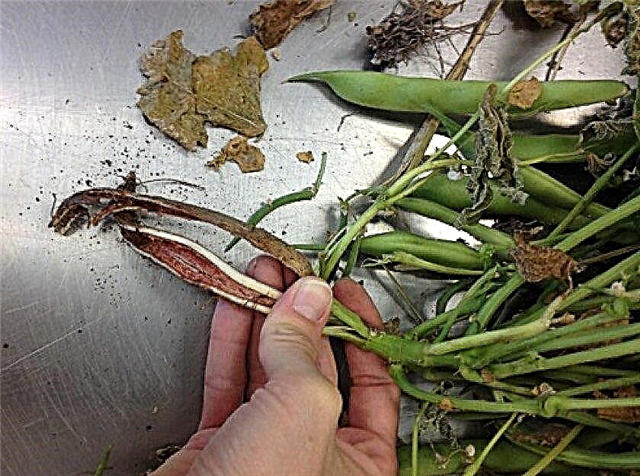 In general, the external signs of root rot are hard to miss - the plant rapidly withers, the leaves wilt and turn yellow, and the vessels have a bright orange tint. Long dry weather contributes to the development of the pathogen, which significantly weakens the plant, as well as a lack of moisture in the soil.
In general, the external signs of root rot are hard to miss - the plant rapidly withers, the leaves wilt and turn yellow, and the vessels have a bright orange tint. Long dry weather contributes to the development of the pathogen, which significantly weakens the plant, as well as a lack of moisture in the soil.However, the disease can also be encountered in case of high humidity at the stage of seed maturation and even in storage. Spore infection occurs through soil in which plant debris and infected seeds are stored. To reduce the risk of developing adversity, you must adhere to the following recommendations:
- select resistant pea varieties of the disease: Uncovered 1, Nemchinovsky 776, Uladovsky 10 and others;
- to enhance the growth and development of plants, treat the soil with potash and phosphorus fertilizers;
- regularly clean the bed of weeds;
- during the entire growing season, spraying of crops with permissible fungicides is allowed.
Pea pests
No less big trouble for those who want to grow peas are insect pests, which in large quantities are able to almost completely destroy the crop and its quality. Parasites are also dangerous during the storage of beans of this culture.
 Protecting peas from pests requires compliance with agricultural measures - this is primarily a thorough cleaning of the soil from plant residues, the use of various fertilizers, timely mulching and coating with a film. Such simple techniques will help eliminate the laying of pest eggs and ensure the death of both pupae and adults.
Protecting peas from pests requires compliance with agricultural measures - this is primarily a thorough cleaning of the soil from plant residues, the use of various fertilizers, timely mulching and coating with a film. Such simple techniques will help eliminate the laying of pest eggs and ensure the death of both pupae and adults.Pea moth
One of the most widespread and worst enemies of peas is the pea moth or, as it is also called, bruchus. The pest is a brown caterpillar with a length of 7–9 mm, which is most active in the dark during calm and dry weather, therefore, gardeners of the southern regions are most often faced with this scourge. Having laid its larvae on the leaves and flowers of peas, the parasite immediately prepares for wintering, so that next spring it will lay down a new clutch.
Hatched caterpillars penetrate the fetus and feed on a pea, leaving it after a few weeks. A sign of pea defeat by the moth is a gnawed hole on the pod, inside of which there are peas covered with a black spider web. Loss of crop after the life of the pest can reach about 40-50%. Seeds damaged by the moth produce weak and painful plants, which are subsequently attacked by other insects.
 You can fight the parasite with the help of agricultural measures, and chemical means. As an alternative to expensive drugs, a self-prepared infusion of garlic is suitable: 30 g of garlic must be passed through a meat grinder and pour 10 liters of water, then insist for a day and strain.
You can fight the parasite with the help of agricultural measures, and chemical means. As an alternative to expensive drugs, a self-prepared infusion of garlic is suitable: 30 g of garlic must be passed through a meat grinder and pour 10 liters of water, then insist for a day and strain.No less effective are decoctions of tomato tops and wormwood. As for chemical analogues, it is possible to spray the affected plants with Fastak, which is diluted in a proportion of 2 ml per 15 liters of water and consumed per liter per 15 square meters. m culture. Agrotechnical measures include:
- planting of early ripe pea varieties, the development of which is ahead of the activity of the parasite;
- early sowing;
- cleaning the site from the crop residues of the previous crop;
- the use of healthy and pre-processed seeds.
Grain
Zernovka is a small-sized beetle of the Bruchus genus, whose life span falls at the beginning of the fruiting of peas. The larva of the parasite pupates in the grains, and in autumn, adult individuals leave their shelter, wintering among plant debris and under the bark of trees. The pest itself is oval, black, with a cross-shaped pattern on the abdomen.
Grain refers to the barn pests of peas, which is distributed around the world along with the seeds of all legumes, but prefers to eat exclusively from this crop. A favorable condition for the development of the pest is sunny and humid weather, which, with its duration in the future, will only increase the number of the parasite.
 At first, it is difficult to notice the signs of pea damage by a grain by seed, since there are no visible damages on the plant, and only a brown spot on the peel indicates the presence of a pest. Damaged grains not only lose their nutritional and seed qualities, but also germination.
At first, it is difficult to notice the signs of pea damage by a grain by seed, since there are no visible damages on the plant, and only a brown spot on the peel indicates the presence of a pest. Damaged grains not only lose their nutritional and seed qualities, but also germination.The main measure of protection is the use of chemicals - insecticides, which process crops at the beginning of flowering, as well as the storage of grain at low temperatures. Agrotechnical methods of struggle:
- early sowing of culture;
- deep autumnal plowing, which blocks the exit of beetles;
- destruction of plant debris;
- crop rotation compliance.
Nodule weevil
Another dangerous pest of peas, which inhibits its growth by damaging the roots of the plant. The weevil is characterized by wintering in the usual place of feeding, that is, in fields sown with legumes. The beetle is small in length, only 5 mm, gray, lacks legs and eyes, and the chitinized head is equipped with dark mandibles.
From the very first days of life, the parasite needs additional nutrition, so its appearance on pea leaves can be seen already in the first spring days. The pest is capable of destroying all the foliage in just a day, even in the vast territory of culture growth, since beetles never leave their homes and do not stop even at night.
 The signs of the active life of the weevil are visible with the naked eye: the parasite completely eats up the top of the plant, starting to feast on the cotyledons, and the larvae make their way into the soil and devour it from below. Affected plants usually die immediately without having to give the beans. The attack of these harmful insects leads to a noticeable drop in yield - up to 70%.
The signs of the active life of the weevil are visible with the naked eye: the parasite completely eats up the top of the plant, starting to feast on the cotyledons, and the larvae make their way into the soil and devour it from below. Affected plants usually die immediately without having to give the beans. The attack of these harmful insects leads to a noticeable drop in yield - up to 70%.Natural conditions usually inhibit the appearance of pests - it can be either sudden frosts or prolonged arid weather. In addition to this factor, which is unreasonable to rely on, there are also a number of measures aimed at preventing adversity - these are agrotechnical methods and chemical agents that repel the parasite.
Well-proven as a way to fight a remedy called Fastak the proportions of which are similar to those in the fight against the pea moth. Protecting crops from a pest also involves thoroughly plowing the land after harvesting the previous harvest, liming the soil and sowing peas away from other leguminous crops.
Bean fire
A bean or acacia fire is one of the most malicious and ruthless exterminators of peas in all areas of its growth. Mass reproduction of this pest can reduce the yield by 50%, which is greatly facilitated by hot and dry weather, and damaged grains lose their sowing qualities and become unusable.
 Caterpillars winter in cocoons in the soil, pupation occurs in spring. The first appearance of butterflies is observed already in early June, the maximum flight - in July-August. The most intense activity is the fire-flare at night, then it feeds on nectar of flowers, and sits on the leaves of plants during the day. The nearest acacia plantings next to legumes in the most favorable way affect the development of their population, and greatly increase the risk of pest damage to the latter.
Caterpillars winter in cocoons in the soil, pupation occurs in spring. The first appearance of butterflies is observed already in early June, the maximum flight - in July-August. The most intense activity is the fire-flare at night, then it feeds on nectar of flowers, and sits on the leaves of plants during the day. The nearest acacia plantings next to legumes in the most favorable way affect the development of their population, and greatly increase the risk of pest damage to the latter.Females lay eggs on the ovary of the corolla or on the stamen tubules, less often - on young fruits. Hatching caterpillars destroy the leaf of the bean and feed on its contents, and when finished, immediately move to another bean, while leaving behind a webs of excrement.
You can prevent the parasite from pea with the help of simple agricultural techniques:
- plowing the soil, which provides deep smelling of the tracks;
- sowing crops in optimal terms;
- isolation of peas from the nearest acacia plantings;
- weed control.
Unfortunately, the chemical protective measure has not yet been fully tested and studied, but preliminary spraying of chlorophosomes (2 kg per 1 ha) and phosphamide (2.5 kg per 1 ha) was most effective.
Chickpea Mining Fly
This pest is a danger to many leguminous crops, the larvae of which gnaw through passages in all parts of plants, and adult individuals pierce the stems and feed on plant juices. As a result of such damage, the yield is significantly reduced - up to 60–70%. The fly is small in length - only 2 mm, brown, with a bright yellow head and a special proboscis, with which the pest pierces the plant in order to feed or lay eggs.
 The larvae, having just left the egg, immediately make passages of different lengths and shapes in the leaf, which is called “mines”. Dying and lifeless leaves quickly turn yellow and fall, which subsequently leads to a shortage of crops. Depending on the type of parasite, pupation can occur both in the soil and on the plant itself. Over the entire growing season, the fly can give about 5 generations.
The larvae, having just left the egg, immediately make passages of different lengths and shapes in the leaf, which is called “mines”. Dying and lifeless leaves quickly turn yellow and fall, which subsequently leads to a shortage of crops. Depending on the type of parasite, pupation can occur both in the soil and on the plant itself. Over the entire growing season, the fly can give about 5 generations.Pest control measures include deep plowing of the land in which pupae hibernate and the destruction of nearby weeds, which also serve as food for the parasite. Of the chemical methods, various insecticides and the drug Verimek can be distinguished, which is distinguished by the ability to deeply ingest into the leaves and effectively eliminate both adults and larvae.
Aphid
The most common pest of all agricultural plants, which is also a carrier of various viruses. The harmfulness of the parasite consists in sucking the juice from the plant, covering it with feces, which subsequently gets the spores of pathogenic fungi. Even with a slight damage to the plant, crop losses reach 70%.
 The aphid is large enough, 5–8 mm long, green or red, winter directly on the plant, lives mainly in colonies on leaves and flowers. The appearance of the parasite is most often due to climatic conditions, however, as a rule, this occurs in late August and early September.
The aphid is large enough, 5–8 mm long, green or red, winter directly on the plant, lives mainly in colonies on leaves and flowers. The appearance of the parasite is most often due to climatic conditions, however, as a rule, this occurs in late August and early September.Protection against aphids requires mandatory compliance with agricultural standards, namely:
- sowing early ripening varieties;
- regular spraying with plain water will help to destroy up to 50% of the pest, whose development in conditions of high humidity slows down;
- thorough weed control;
- isolation of peas from other leguminous crops, in which aphids also winter;
- the use of chemicals such as Spark Fastak and Fitoverm, and all kinds of infusions are no less effective - for example, an ash-soap solution perfectly eliminates aphids;
- elimination of the pest occurs in conjunction with the elimination of ants, which contribute to its reproduction.
In order to get a good and rich harvest, it is necessary to take care in advance of preventing plants from diseases and pests, the occurrence of which can be avoided by observing preventive measures and pretreatment with folk remedies or chemical preparations. The complex of these measures will help you enjoy a tasty and healthy vegetable and protect the garden from the invasion of all kinds of misfortunes.

 An ideal condition for the development of spores is high humidity. The causative agents of fusariosis have the property of being stored in the soil for a long time, then to get into the plant through the roots and back of the stem. In the event of the development of the disease, be prepared to reduce the yield to 70% and soon the death of plants that lose their vital functions, and the fruits - commercial qualities.
An ideal condition for the development of spores is high humidity. The causative agents of fusariosis have the property of being stored in the soil for a long time, then to get into the plant through the roots and back of the stem. In the event of the development of the disease, be prepared to reduce the yield to 70% and soon the death of plants that lose their vital functions, and the fruits - commercial qualities. In general, the external signs of root rot are hard to miss - the plant rapidly withers, the leaves wilt and turn yellow, and the vessels have a bright orange tint. Long dry weather contributes to the development of the pathogen, which significantly weakens the plant, as well as a lack of moisture in the soil.
In general, the external signs of root rot are hard to miss - the plant rapidly withers, the leaves wilt and turn yellow, and the vessels have a bright orange tint. Long dry weather contributes to the development of the pathogen, which significantly weakens the plant, as well as a lack of moisture in the soil. Protecting peas from pests requires compliance with agricultural measures - this is primarily a thorough cleaning of the soil from plant residues, the use of various fertilizers, timely mulching and coating with a film. Such simple techniques will help eliminate the laying of pest eggs and ensure the death of both pupae and adults.
Protecting peas from pests requires compliance with agricultural measures - this is primarily a thorough cleaning of the soil from plant residues, the use of various fertilizers, timely mulching and coating with a film. Such simple techniques will help eliminate the laying of pest eggs and ensure the death of both pupae and adults. You can fight the parasite with the help of agricultural measures, and chemical means. As an alternative to expensive drugs, a self-prepared infusion of garlic is suitable: 30 g of garlic must be passed through a meat grinder and pour 10 liters of water, then insist for a day and strain.
You can fight the parasite with the help of agricultural measures, and chemical means. As an alternative to expensive drugs, a self-prepared infusion of garlic is suitable: 30 g of garlic must be passed through a meat grinder and pour 10 liters of water, then insist for a day and strain. At first, it is difficult to notice the signs of pea damage by a grain by seed, since there are no visible damages on the plant, and only a brown spot on the peel indicates the presence of a pest. Damaged grains not only lose their nutritional and seed qualities, but also germination.
At first, it is difficult to notice the signs of pea damage by a grain by seed, since there are no visible damages on the plant, and only a brown spot on the peel indicates the presence of a pest. Damaged grains not only lose their nutritional and seed qualities, but also germination. The signs of the active life of the weevil are visible with the naked eye: the parasite completely eats up the top of the plant, starting to feast on the cotyledons, and the larvae make their way into the soil and devour it from below. Affected plants usually die immediately without having to give the beans. The attack of these harmful insects leads to a noticeable drop in yield - up to 70%.
The signs of the active life of the weevil are visible with the naked eye: the parasite completely eats up the top of the plant, starting to feast on the cotyledons, and the larvae make their way into the soil and devour it from below. Affected plants usually die immediately without having to give the beans. The attack of these harmful insects leads to a noticeable drop in yield - up to 70%. Caterpillars winter in cocoons in the soil, pupation occurs in spring. The first appearance of butterflies is observed already in early June, the maximum flight - in July-August. The most intense activity is the fire-flare at night, then it feeds on nectar of flowers, and sits on the leaves of plants during the day. The nearest acacia plantings next to legumes in the most favorable way affect the development of their population, and greatly increase the risk of pest damage to the latter.
Caterpillars winter in cocoons in the soil, pupation occurs in spring. The first appearance of butterflies is observed already in early June, the maximum flight - in July-August. The most intense activity is the fire-flare at night, then it feeds on nectar of flowers, and sits on the leaves of plants during the day. The nearest acacia plantings next to legumes in the most favorable way affect the development of their population, and greatly increase the risk of pest damage to the latter. The larvae, having just left the egg, immediately make passages of different lengths and shapes in the leaf, which is called “mines”. Dying and lifeless leaves quickly turn yellow and fall, which subsequently leads to a shortage of crops. Depending on the type of parasite, pupation can occur both in the soil and on the plant itself. Over the entire growing season, the fly can give about 5 generations.
The larvae, having just left the egg, immediately make passages of different lengths and shapes in the leaf, which is called “mines”. Dying and lifeless leaves quickly turn yellow and fall, which subsequently leads to a shortage of crops. Depending on the type of parasite, pupation can occur both in the soil and on the plant itself. Over the entire growing season, the fly can give about 5 generations. The aphid is large enough, 5–8 mm long, green or red, winter directly on the plant, lives mainly in colonies on leaves and flowers. The appearance of the parasite is most often due to climatic conditions, however, as a rule, this occurs in late August and early September.
The aphid is large enough, 5–8 mm long, green or red, winter directly on the plant, lives mainly in colonies on leaves and flowers. The appearance of the parasite is most often due to climatic conditions, however, as a rule, this occurs in late August and early September.